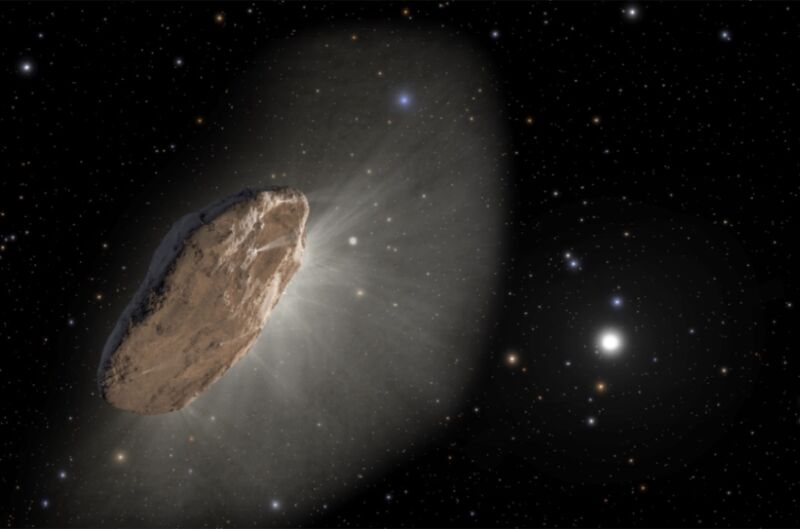

There’s a simpler answer to ‘Oumuamua’s weird orbit: Outgassing hydrogen
source link: https://arstechnica.com/science/2023/03/theres-a-simpler-answer-to-oumuamuas-weird-orbit-outgassing-hydrogen/
Go to the source link to view the article. You can view the picture content, updated content and better typesetting reading experience. If the link is broken, please click the button below to view the snapshot at that time.

It's still not aliens. Sorry —
There’s a simpler answer to ‘Oumuamua’s weird orbit: Outgassing hydrogen
‘Oumuamua is "a standard interstellar comet that just experienced heavy processing."
Jennifer Ouellette - 3/23/2023, 7:35 PM

In late 2017, our Solar System received its very first known interstellar visitor: a bizarre cigar-shaped object hurtling past at 44 kilometers per second, dubbed 'Oumuamua (Hawaiian for "messenger from afar arriving first"). Was it a comet? An asteroid? A piece of alien technology? Scientists have been puzzling over the origin and unusual characteristics of 'Oumuamua ever since, most notably its strange orbit, and suggesting various models to account for them.
But perhaps the answer is much simpler than previously thought. That's the conclusion of a new paper published in the journal Nature. The authors suggest that 'Oumuamua's odd behavior results from the outgassing of hydrogen as the icy body warmed in the vicinity of the Sun—a simple mechanism common among icy comets.
As we reported previously, 'Oumuamua was first discovered by the University of Hawaii's Pan-STARRS1 telescope, part of NASA's Near-Earth Object Observations program to track asteroids and comets that come into Earth's vicinity. Other telescopes around the world soon kicked into action, measuring the object's various characteristics.
Astronomers were startled to find that 'Oumuamua was accelerating away from our Sun much faster than could be explained by gravity alone—i.e., via a "rocket effect" that is common in comets, caused by sunlight vaporizing the ice such bodies are made of. While its odd orbit initially had it categorized as a comet, imaging didn't show any indication of gas and dust being released, as is typical when a comet approaches the Sun. Its elongated, cigar-like shape, combined with its relatively rapid rotation, led to an early suggestion that it could also be an asteroid.
AdvertisementSeveral astronomers suggested that 'Oumuamua may be the fragment of another, larger parent body in another solar system—a long-period comet or debris disk, perhaps, or even a super-Earth planet—torn apart by tidal forces as it passed too close to its host star. Specifically, 'Oumuamua-like interstellar objects can be produced through extensive tidal fragmentation during close encounters of their parent bodies with their host stars, then ejected into interstellar space. Or perhaps it's a fragment of an exoplanet knocked off by an impact roughly a half-billion years ago, throwing it out of its parent system. Such a parent body would have had characteristics similar to Pluto, which is covered in nitrogen ice like Neptune's moon Triton.
As for the strange acceleration and odd orbit, in October 2018, Harvard astronomer Avi Loeb and his then-post-doc, Shmuel Bialy, submitted a preprint (since published) to the Astrophysical Journal. As we reported then, much of their analysis discussed the possibility of solar radiation pressure, or the momentum transfer of photons striking an object—the driving idea behind "solar sails." Loeb and Bialy stirred controversy by suggesting that the object might be a very thin solar sail—specifically, "a fully operational probe sent intentionally to Earth vicinity by an alien civilization."
Page:
Recommend
About Joyk
Aggregate valuable and interesting links.
Joyk means Joy of geeK